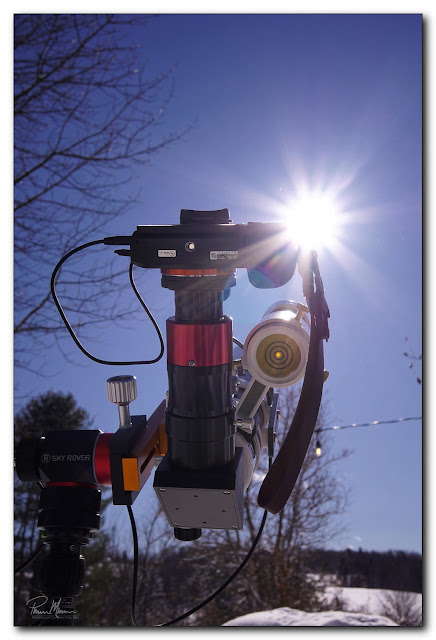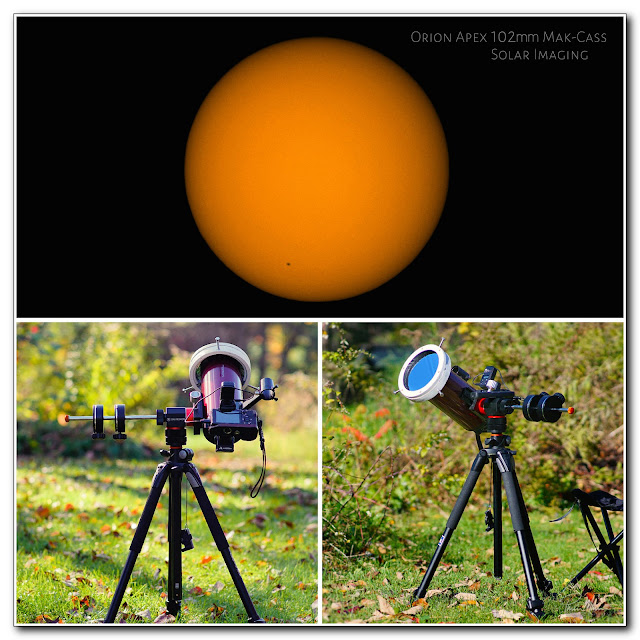Giant Prominence and Spicules

M any nights before heading to bed, I continue to try to refine my workflow for processing my solar imagery data. I'm definitely beginning to understand what needs to be done in this process because I feel my resulting images are getting better and better. This photo, below, is a photo I compiled and processed from data collected just a couple of days ago on July 31st. I've found that when I black out the disk/sphere of the sun, everything on the limb of the sun really stands out. The fine hair-like spicules of red-hot plasma are clearly visible all along the limb. In this particular shot, there is a rather large prominence too which really is the main subject here. This is red glowing plasma consisting of hydrogen and helium. This prominence is flowing and looping along magnetic fields about 24,000 miles into the corona from in front of the limb to back behind the limb in this photo. Generally speaking, prominences c...











